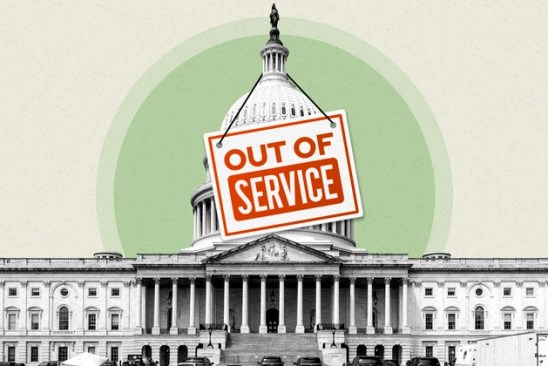On Oct. 1, 2025, at 12:01 a.m., the U.S. federal government entered a shutdown after Congress failed to pass the bills needed to fund government agencies for the new fiscal year. Lawmakers did not approve a short-term spending measure and instead called a continuing resolution, which is often used to keep the government open while budget negotiations continue.

This year’s shutdown stemmed from a standoff between Congress and the White House over federal spending priorities; the dispute focused mainly on the amount money should be allocated for social programs, defense, and health care subsidies under the Affordable Care Act. Democrats have insisted on keeping those subsidies in place, arguing they are essential for helping lower-income families afford health insurance. Several Republicans, however, say the issue of health care funding should be debated separately from the federal budget and that continuing the subsidies drives up overall spending.
Earlier this year, Congress passed the Rescissions Act of 2025, which cut billions in previously approved federal funding – including money for international aid and public broadcasting. Those cuts have now become part of a larger political fight over how to reduce government spending while maintaining key services. The disagreements have left Congress unable to pass the 12 annual appropriations bills required to fund most government agencies, triggering the current shutdown.
The shutdown means that many agencies no longer have legal authority to spend money, forcing hundreds of thousands of federal employees to stop working. According to the National Conference of State Legislatures, about 750,000 federal workers are currently furloughed, while others performing essential duties, such as law enforcement and air traffic control, must continue to work without pay. The Office of Management and Budget has told agencies to prepare for possible permanent staff reductions if the shutdown continues.
Essential programs funded through mandatory spending, such as Social Security and Medicare, remain in operation. Other public-facing services, on the other hand, have closed or scaled back, including Smithsonian museums and the National Zoo, which are currently shut to visitors. Some visitor centers, including the U.S. Capitol Visitor Center, have also shut their doors due to the shutdown. The Internal Revenue Service has furloughed nearly half of its workforce, delaying tax processing and assistance. The Environmental Protection Agency and Department of Energy have paused hundreds of scientific and environmental grants, halting projects nationwide.

The effects extend far beyond Washington. Many states rely on federal reimbursements for health care and education programs, and delays in funding could force them to use state money or temporarily reduce services. Treasury Secretary Scott Bessent said the shutdown is already “weighing on the economy”, citing slowed federal contracts and delays in payments to agencies and contractors. Economists from Reuters estimate the shutdown could cost the U.S. economy billions of dollars per week in lost productivity and reduced consumer spending.
The impact on scientific research is especially concerning for students and early-career researchers. Many university labs receive grants from federal programs such as the National Science Foundation or the National Institutes of Health, which are currently unable to issue or renew funding.
“As a science research student, I worry the shutdown will make it much harder to find summer research opportunities since many university labs depend on federal grants,” junior Alice Yang said. “Someone I know who works in environmental policy is losing her job, which is scary because that’s along the same path I want to pursue.”
Beyond individual concerns, students also noted the general implications of the shutdown on public perception of the government.
“It’s jarring to think that thousands of people go to work every day and suddenly might not get paid,” junior Talia Kahen said. “It makes you feel the fragility behind all the systems we depend on.
Some students went further, pointing out that national disagreements can have tangible, direct effects on local communities.
“We always hear about politics in Washington, but this feels close to home,” junior Kendall Aufenanger said. “Families are worried about missed paychecks, and students like us start to realize how much these issues shape the opportunities we have.”
In Washington, negotiations remain tense. House Speaker Mike Johnson had warned that the shutdown could become the longest in U.S. history if Congress fails to reach a deal soon. Democrats have refused to support any budget plan that removes health care subsidies, while Republicans have said they will not agree to additional spending without offsetting cuts.
For now, large portions of the government remain stagnant. From closed museums in Washington to suspended research projects across the country, the shutdown highlights how connected and vital federal operations are to everyday life. Until lawmakers reach a compromise, millions of Americans, from federal workers to students, will continue to feel the effects of the nation’s political deadlock.





